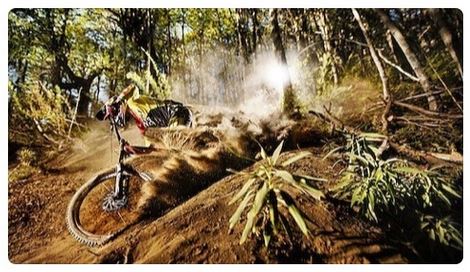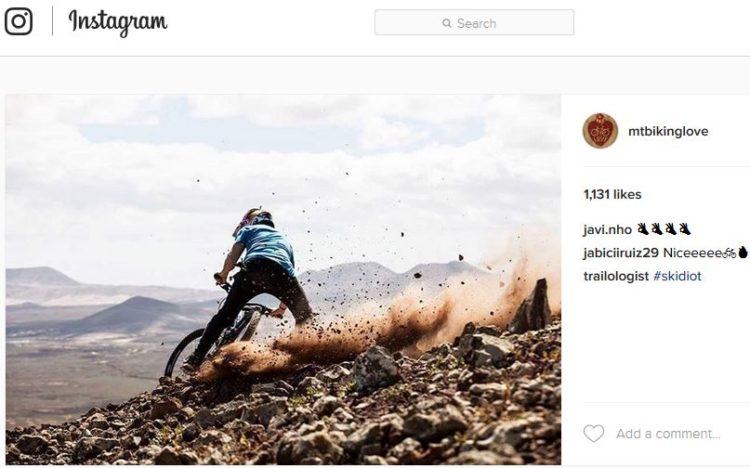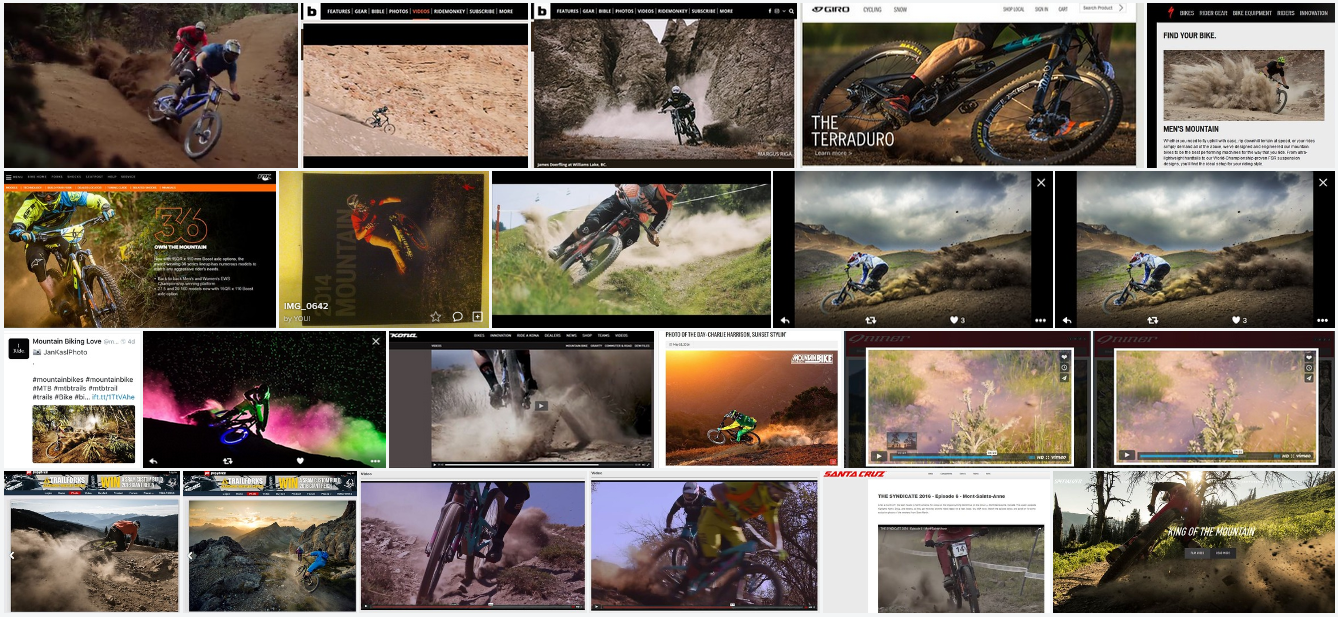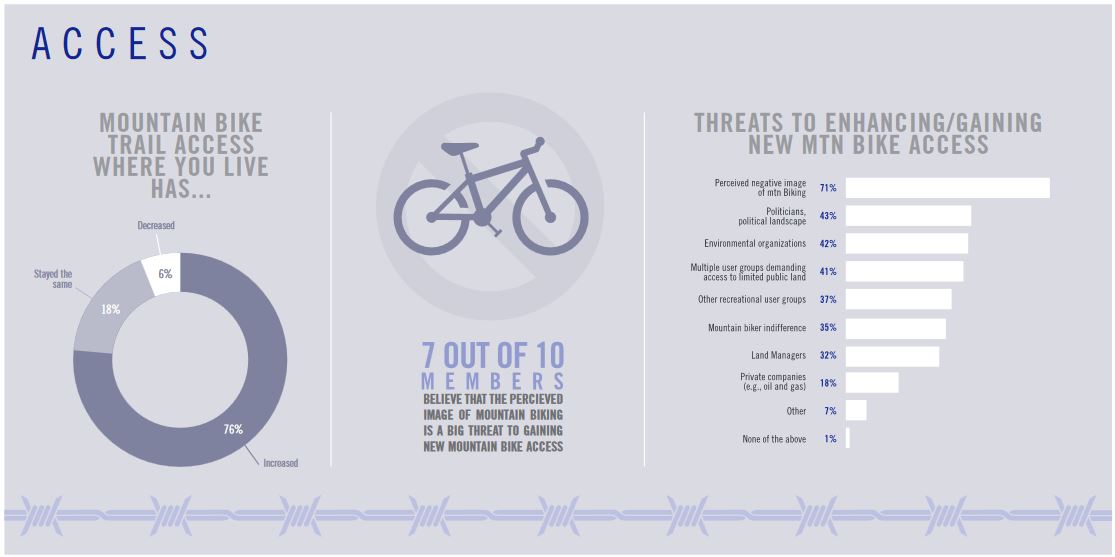Like many many cultures and classes of people, trail user groups (hikers, bikers, equestrians…), can be, or often are, lumped into subsets or categories and “types:” day hikers, thru hikers, pole users, trail runners, ultra runners, free riders, cross country riders, gear junkies… These user groups and subsets may be associated with certain mores, and/or stereotypes of behavior. While some stereotypes may ring true to some of their behaviors, there are always exceptions. Some sentiments people have about these groups aren’t necessarily wrong or bad, some are….depending on who you ask about what subset. These attitudes can turn into prejudice or isms. I’m about to express my disdain, or perhaps bikism, against people that skid, film skidding, and promote skidding instead of questioning this apparent paradigm. Right or wrong, one thing is certain, behaviors captured on film help reinforce skid culture itself, and my ism beyond my sphere of influence. There is a cadre of people looking to limit and exclude bikes from trails, and they have a plethora of footage at their fingertips to show land mangers and the powers that be that mountain bikers are brash and brutish with an air of privilege or self entitlement, if not outright disrespect and disregard for trails and other user groups.

When I say “skid culture,” I mean that some mountain bikers skid knowingly and deliberately, or it is part of their riding repertoire. Further, there seems to be a similar copy-cat culture or mentality among photographers, marketers, and bike companies that skidding is to be promoted and depicted as one more “maneuver” or trick that mountain bikers do, or should do. Props to the people that are outside of that culture, trying hard not to skid at all, or glorify the damage with images.
The imagery has ramifications when it comes to how mountain bikers are seen and portrayed within and outside of that user group, what stereotypes form, and perhaps how mountain bike culture sits in the minds of the rule makers that decide how access to trails should go, affecting handfuls to thousands of users, not to mention wildlife. The greater public, and land mangers may or may not change their conceptions, and stereotypes, wrong or right, towards mountain biking itself based on skid culture imagery, but I’m not sure it’s worth the risk of what might be considered a money shot by the small minded.
I don’t know how to measure the negative affects of skid culture on trail access, or the amount of labor spent to reroute or repair eroded trail segments that were partly, or wholly, the result of skidding. I do know skidding can be a slap in the face to many that build and maintain trails, it’s not fun for those that wreck in loose sediment, or have to get off and push their bikes through it, and to reiterate, it’s not great for wildlife.
A recent film short about Japan, featured on Bike Magazine’s website, contained a few comments about trail etiquette, and in particular about skidding. The comments made me cringe a bit because I felt that the “strict” set of “rules” or trail etiquette depicted in the film should apply everywhere, not just these certain trails in Japan. The language reinforced anti-mountain bikism, as it seemed to say skidding is normal, and the rules on these Japanese trails are not. At one time it seemed, at least in my circles in Virginia, then Arizona, Colorado, and southern California, that skidding was a no-no. Those circles had their own bit of bikism, and called skidders “skidiots.”
The film prompted me to write this entry to share my longtime feelings on “skid culture” among people that mountain bike, and the ramifications of skidding on public perceptions and the future of bikes on trails.
Check almost any mountain bike mag, catalog, or film within the last decade (or more) and you’ll see features, ads, and films depicting “skidiots” that I tend to associate with Idiocracy. Yes, I am harboring an ism, an anti-attitude, if not hate, about “those people” that skid intentionally. While some of the perpetrators (and photographers) may help build and maintain the trails they rip up, others do not. The same may be said for the image and stereotypes they build and maintain, regardless if skidding is done on private or public land. Whatever the case, I’m not sure it’s a culture that’s worth promoting, because if every mountain biker did it, it would change the nature of trails, the perception of what mountain biking is, and the amount of trails bikes get to access. Luckily not “all” mountain bikers do it, and it’s not necessarily required. The question remains, should any mountain bikers skid intentionally, and should it be “promoted”? There is a large contingent of skidiots among us, and bike companies and the like that do promote this ism. (Got an image or link? Share it. #skidiot, #endskidculture)
I’ve been looking in disgust at skidiots for years. Skidiot footage has slowly ramped up over the past two? decades. I don’t recall seeing it much before that. I was finally at my braking point back in 2013 when I decided to pick on Kona and send them an email for glorifying the motion (and riding in the rain and mud, a no-no in most circles, especially the southwest):
“To whom it may concern,
IMBA Rules of the trail: #2. Leave No Trace: Be sensitive to the dirt beneath you. Wet and muddy trails are more vulnerable to damage than dry ones. When the trail is soft, consider other riding options…
Consider this “rule” when making promo vids of rain and mud riding (not to mention skidding and throwing dirt off trail) so idiots don’t think it’s OK to trash trails that bear the marks of damage for weeks or months…
Here’s the email response from a Kona rep:
Thanks for the input. The unfortunate reality is that riding really aggressively on steep trails sometimes requires those types of maneuvers. I’m not saying it’s correct, but it is definitely the reality in our sport. Also bear in mind that if we (in the PNW/BC) were to stop riding in when the trails were wet we wouldn’t ride for 10 months out of the year. The dirt in the PNW and BC is a lot different than most locales, and handles moisture/precipitation better than a lot of places so trail damage isn’t as large of a concern as many places.
In spite of Kona’s reply, skidiots are certainly real, in all climates, and even on trails that aren’t so steep. I have never seen films or photos qualify that that skidding and/or riding in wet conditions is kosher in some climes, and not others. There is no Surgeon General of Mountain Biking to label these images with warnings, and I don’t know that there needs to be (and no I don’t want to be that person either). Hopefully most riders get educated by the locals in their riding area (assuming skidding is not the norm).
The underlying question is, how do we change behaviors and perhaps trail design to reduce the amount of skidding on trails? If approached like the drug war, prohibition and rules are not going to stop skidding anymore than a speed limit sign will stop speeding. Education and design are key, and something else that seemed to be a point of the film, culture. But how do we change or have a no skid culture when we are sold a culture that says skid, look at this image, or ad, and erode trails like these idiots in the images? Do we promote a culture that is ‘cultured,’ or a culture that is a little brash and brutish…Making several hundred thousand images, past and present, disappear won’t stop this culture. Skidders Anonymous might help, as will time and education. Reinforcing skid culture with imagery will only help the scars and erosion live.
Ultimately, the trail community at large already try to reinforce a culture of stewardship, but there is a small group of riders, photographers, and companies that appear to think skidding is stewardship. I have my doubts as tho whether the rest of the trail community or land managers feel this way. Erosion and displacement will never be zero, but one skid could be 2-10 years worth of traffic in less than two seconds. Is this wrong? Is this stewardship?

I imagine most companies would have a weak defense and response similar to Kona’s for promoting Idiocracy. All I can do is complain here, send an occasional email, and try my best not to skid myself, like a saint…. “The only real revolution is in the enlightenment of the mind and the improvement of character, the only real emancipation is individual, and the only real revolutionaries are philosophers and saints.” (Will Durant) Well Will, it actually takes more than just philosophizing, it takes action, call them saints if you will.
While IMBA is not the end all be all in the mountain bike world, many agencies and trail groups look to them for insight, wisdom, and some sort of backbone on issues that affect mountain bikers. I used their “rules of the trail” in my letter to Kona. They are seen as mtb saints by many. As far as I know however, they have never made a public statement or campaign about skidiot culture, or called out industry for pimping it. Of course IMBA’s bread is buttered by some of the perpetrators (most in the gallery below). Would IMBA rather lay silent (or sell out) than lose dollars? None of the IMBA trail “rules” say anything about skidding, although “leave no trace” principles would seem to imply just that (see IMBA rule #2). Here is something to consider IMBA, because there are so many people that need explicit and direct language that doesn’t beat around the bush, include a line about trying not to skid in your “rules” (no metaphors or allegory please). Further, stop wringing your hands and ask that bike mags and photographers stop showing Skidiocracy. Of course this isn’t going to end the practice, but its better than beating around the pile of unconsolidated sediment on it’s way away from the trail.
While not “all” images, videos, and ads on popular bike sites, mags, and brand catalogs show skidding, it’s not hard to find many scars being formed. Hopefully they don’t stick in the minds of consumers and land managers, and the saints outnumber the sinners giving mountain biking a bad name and stereotype to go with it.
Stop promoting this crap Specialized, Kona, Niner, Santa Cruz, Giro, Fox… insert bike company, bike website, and bike magazine here: ________________. I even saw skidding on an REI window banner of all places, geez.

Skidding Is Not Stewardship
*Update:
IMBA’s recent member survey came out, and thankfully, yet sadly, the same reality since the 80’s prevails: access and the image of mountain biking are an issue. They go hand-in-hand. Yes, mountain bike access has increased, and yes there are more trails than 20 years ago, but it’s still a drop in the bucket compared to single use hiking trails.
If IMBA called out their sponsors and others to stop promoting negative imagery it’s not likely to change the world, but it’s a step towards changing cultural norms to the positive. According to the survey IMBA ought to step up and do just that, as “seven in ten IMBA members ranked the perceived negative image of mountain biking as the number one threat to gaining new mountain bike trail access.” No shit! But get a grip, this is not a “perceived” image, it is real, and goes beyond real imagery to real actions, and attitudes on websites, blogs, forums, and ultimately onto trails across the country. Regretfully, a few rotten apples spoil the bunch, or a few maggots turn into “flies spreading pieces of shit.” All trail users, not just mountain bikers, should take this imagery, and the repercussions to heart, find their hearts and help change a culture that needs help, and access.
https://www.flickr.com/photos/136721709@N04/albums/72157711498258956^PDF version

Pingback: Camelbak, Giro, Blackburn, and Bell Ties to Assault Rifles and the NRA – Trailism
Pingback: IMBA’s Position on The Wilderness Act – Trailism
Pingback: Flow versus Flowy Trails – Trailism